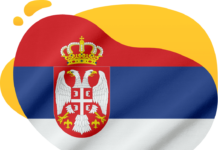1. Introduction
Project management methods are systematic approaches employed to plan, execute, and close projects. Effective project management is the backbone of successful organizations, ensuring goals are met within scope, time, and budget constraints. In this article, we delve into the diverse landscape of project management methods, offering insights into their nuances and applications.
2. Traditional Project Management
Traditional project management methods, typified by the waterfall model, follow a linear sequence of phases—initiation, planning, execution, monitoring, and closure. While this approach provides structure, it may lack flexibility. Widely used traditional methods include the Waterfall model and the Critical Path Method (CPM).
3. Agile Project Management
In contrast, agile project management emphasizes flexibility and collaboration. Agile methodologies, such as Scrum and Kanban, prioritize adaptability and iterative progress, making them ideal for dynamic project environments. Organizations worldwide are adopting agile principles to enhance responsiveness to change.
4. Scrum Framework
At the forefront of agile methodologies is the Scrum framework. Scrum divides projects into fixed-length iterations called sprints, fostering continuous improvement and customer feedback. Scrum teams collaborate closely, ensuring a transparent and adaptive project development process.
5. Kanban Method
Kanban, another agile methodology, visualizes work as it progresses through a board. This method promotes a pull system, allowing teams to respond quickly to changing priorities. Kanban is especially beneficial for projects with evolving requirements.
6. Lean Project Management
Lean project management, inspired by lean manufacturing principles, seeks to minimize waste and maximize value. By eliminating non-value-adding activities, organizations employing lean methods achieve efficiency and customer satisfaction. Toyota’s success with lean manufacturing is a testament to its effectiveness.
7. PRINCE2
PRINCE2, or PRojects IN Controlled Environments, is a structured project management method widely used in the public and private sectors. PRINCE2 provides a framework for project governance, emphasizing organized planning, control, and successful project delivery.
8. Critical Path Method (CPM)
The Critical Path Method (CPM) is a traditional approach to project scheduling. By identifying critical and non-critical tasks, CPM aids in efficient project planning. However, it may struggle to accommodate changes once the project is underway.
9. Six Sigma in Project Management
Integrating Six Sigma principles into project management ensures a focus on quality and process improvement. This data-driven approach minimizes defects and variations, leading to optimized project outcomes. Companies like General Electric have achieved remarkable success with Six Sigma in project management.
10. Project Management Software
In the digital era, project management software plays a pivotal role in enhancing collaboration and productivity. Tools like Trello, Jira, and Asana streamline communication, task tracking, and project documentation. Choosing the right software aligns with project goals and team dynamics.
11. Hybrid Project Management Approaches
Recognizing the strengths of both traditional and agile methods, some organizations adopt hybrid project management approaches. This approach offers the structured planning of traditional methods and the adaptability of agile, providing a tailored solution for complex projects.
12. Challenges in Project Management
Despite the benefits, project management is not without challenges. Issues such as scope creep, resource constraints, and communication gaps can hinder project success. Addressing these challenges requires proactive problem-solving and a commitment to continuous improvement.
13. Future Trends in Project Management
As technology continues to evolve, project management methods are also undergoing transformations. Artificial intelligence, automation, and data analytics are shaping the future of project management. Project managers of tomorrow must embrace these technological advancements and develop the necessary skills.
14. Conclusion
In navigating the vast landscape of project management methods, one truth remains: there is no one-size-fits-all solution. The choice of method depends on the nature of the project, organizational culture, and the dynamic external environment. Success lies in understanding these methods, adapting them judiciously, and fostering a culture of continuous improvement.
15. FAQs
Q1: Which project management method is best for small businesses?
A1: For small businesses, agile methods like Scrum or Kanban are often more suitable due to their flexibility and adaptability to changing circumstances.
Q2: How does Lean project management differ from traditional approaches?
A2: Lean project management focuses on minimizing waste and maximizing value, promoting efficiency and customer satisfaction. Traditional approaches may follow a more rigid, sequential structure.
Q3: Is PRINCE2 suitable for all types of projects?
A3: PRINCE2 is adaptable and can be applied to various projects, but it is particularly well-suited for large, complex endeavors with multiple stakeholders.
Q4: Can project management software replace the need for a project manager?
A4: While software enhances collaboration and organization, a skilled project manager remains essential for leadership, decision-making, and problem-solving.
Q5: What skills are crucial for future project managers?
A5: Future project managers should develop skills in data analytics, adaptability, and a deep understanding of emerging technologies.













